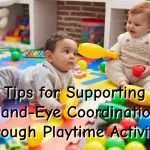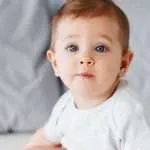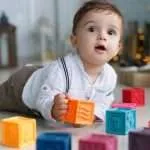Choosing the right toys for babies can seem overwhelming for parents. With so many options available, it’s difficult to know which toys are best for your child’s development at each stage. Selecting age-appropriate, developmental toys is key to stimulating your baby’s cognitive, motor, language and social-emotional growth in the early years.
This article will provide guidelines and recommendations to help you pick the best developmental toys tailored to your child’s current abilities and needs. You’ll learn about:
- The importance of developmental toys
- Toy recommendations by age from newborn to 3 years
- Factors to consider when selecting toys
- Types of developmental toys
- Top toy brands and products
- Common mistakes to avoid
Follow these tips to create a toy collection that engages your baby and gives them a head start on learning!
Key Takeaways
|
Understanding the Importance of Developmental Toys
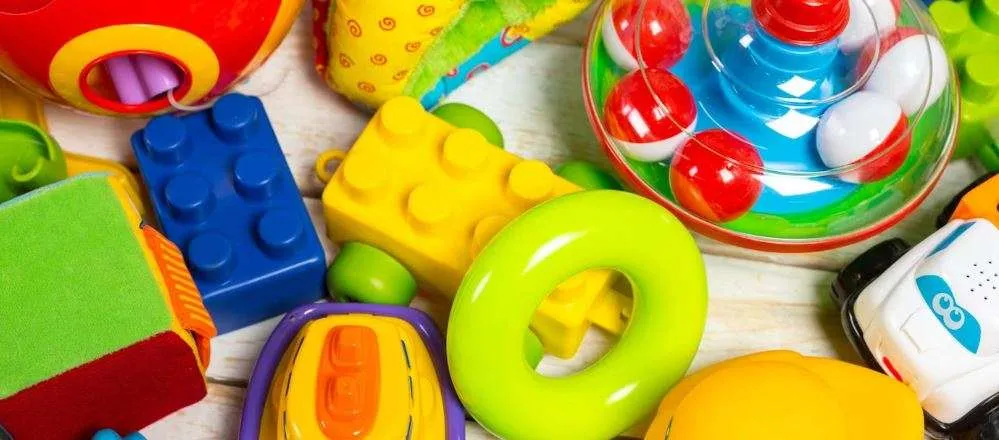
Developmental toys are designed to stimulate a child’s growth and development across various domains including cognitive, motor, language and socio-emotional areas. They help babies and toddlers reach crucial developmental milestones. Here’s a closer look at how they impact growth:
Impact on Cognitive Growth
- Enhance hand-eye coordination
- Improve spatial reasoning skills
- Promote problem solving abilities
- Boost sensory development
- Develop object permanence understanding
- Strengthen memory and focus
- Encourage imagination and creativity
Babies need toys that challenge their thinking skills according to their stage. Puzzles, shape sorters, and building blocks are great for honing cognitive abilities.
Role in Physical Development
- Strengthen fine and gross motor skills
- Improve balance and coordination
- Develop dexterity, grip and reach
- Promote mobility milestones like rolling over, sitting, crawling, walking
- Build muscle tone
Babies need toys that get them moving and interacting with their environment. Activity gyms, grasp and pull toys, balls, and push-pull riding toys boost physical abilities.
Emotional and Social Skill Enhancement
- Reinforce early language and vocabulary
- Encourage imitation, pretend play and role playing
- Develop sharing, turntaking and cooperation
- Spark curiosity, engagement and self-discovery
- Promote self-soothing and emotional regulation
- Foster bonding and attachment
Toys that inspire imagination like dolls, stuffed animals, and play sets as well as interactive books builds socio-emotional competence.
In short, the right developmental toys act like brain fertilizer – they stimulate neural connections and provide learning opportunities that pave the way for future development.
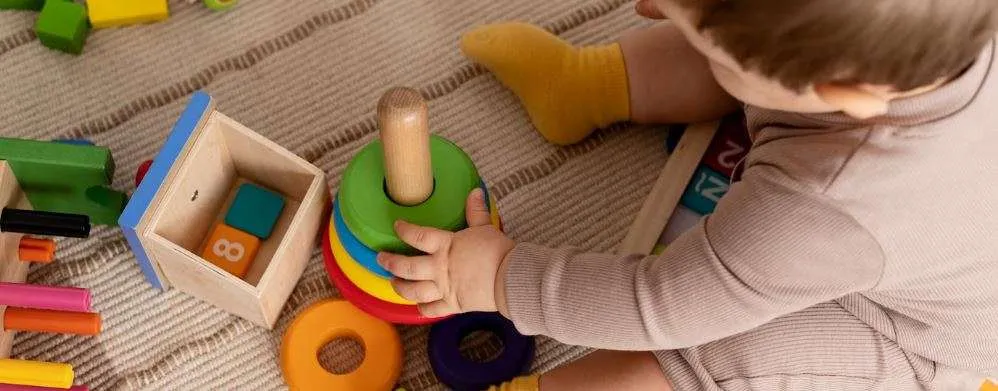
Guidelines for Selecting Developmental Toys by Age
The type of toy that’s right for your child depends on their stage of development. Here are the best developmental toys tailored to your baby’s abilities at each age:
Newborn to 3 Months
At this young age, babies have limited mobility but they start focusing on objects and faces more. They also begin actively using their hands and mouths to explore their world.
Recommended Toys: Crib mobiles, touch and feel books, black and white pattern toys, stuffed animals, unbreakable mirrors, rattles of various textures, teethers, grasping toys with easy-to-hold handles, activity mats and gyms with interesting objects dangling overhead
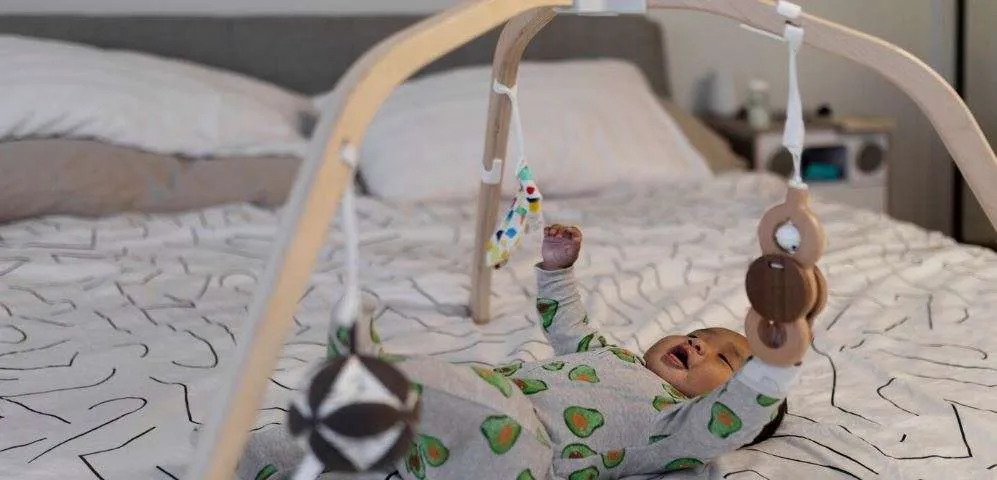
Examples:
- Lamaze Peek-A-Boo Forest Discovery Gym
- Manhattan Toy Skwish Teether
- Bright Starts Grab and Spin Rattle
- Oball Rattle
4 to 6 Months
In this period, babies gain head and neck control, reach for and grasp objects, sit with support, recognize faces and voices, and respond to their own name. Providing toys that boost their emerging abilities paves the way for the next stage.
Recommended Toys: Cause and effect toys, soft blocks and books, balls, activity centers with music and lights, push and pull toys, stacking cups/rings, simple shape sorters, nesting cups/bowls/boxes, higher contrast and patterned toys

Examples:
- Fisher Price Rattle ‘n Rock Maracas
- Sassy Ring O Links
- Baby Einstein Take Along Tunes Musical Toy
- VTech Sit-To-Stand Learning Walker
- Fat Brain Toys Dimpl
7 to 9 Months
During this time, babies gain sitting balance, crawl, pull to stand, engage in purposeful play, understand object permanence, and imitate sounds. Enriching toys support their evolving abilities.
Recommended Toys: Push-pull toys, balls of all sizes, pop-up and peek-a-boo toys, simple puzzles, shape sorters, mega blocks, toy phones, activity tables, dolls and action figures, musical instruments like xylophones and shakers
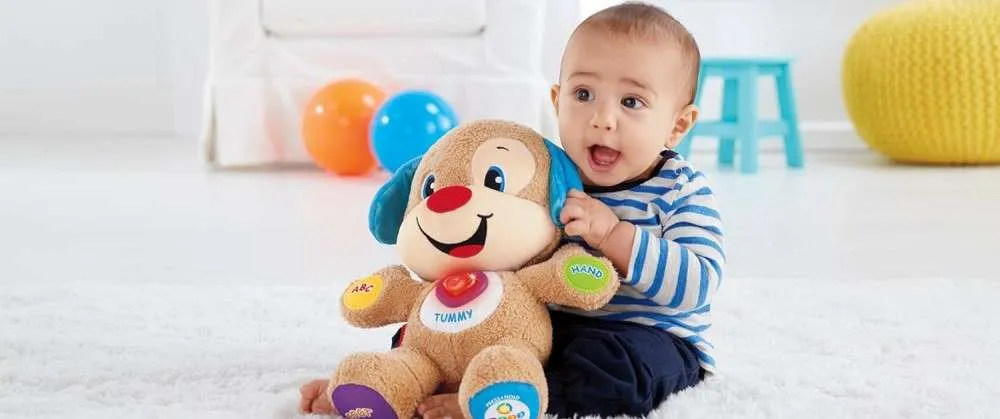
Examples:
- Fisher Price Laugh & Learn Puppy
- Green Toys Keys
- The First Years Stacking Up Cups
- VTech Busy Learners Activity Cube
- Edushape Rainbow Color Nesting and Stacking Cups
10 to 12 Months
In the second half of the first year, babies typically stand while supported, cruise along furniture, understand 10-20 words, begin pointing and waving, respond to their name, and mimic gestures. Toys should tap into their blossoming abilities.
Recommended Toys: Shape sorters, simple puzzles with knobs, blocks and stackers, push and pull toys, board books, balls for rolling and throwing, pop-up toys, sorting boxes and baskets, toy phones, dolls and stuffed animals, wooden trains and cars.

Examples:
- Fisher Price Little People Farm Bucket
- VTech Sort and Discover Activity Table
- Melissa & Doug Deluxe Stacking Train
- Step2 Whisper Ride II Ride On Push Car
- Green Toys Dump Truck
1 to 2 Years
In the second year, toddlers start walking steadily, climb, develop independence, speak in 2-3 word phrases, engage in pretend play, learn simple rules, and gain more hand coordination. Toys at this stage should nurture their blossoming skills.
Recommended Toys: Shape sorters, puzzles with knobs (2-4 pieces), mega blocks, nesting cups, pop-up and pull toys, picture books, balls, riding toys, shopping carts, dolls with accessories, toy phones, simple musical instruments like xylophones, wooden trains and cars.
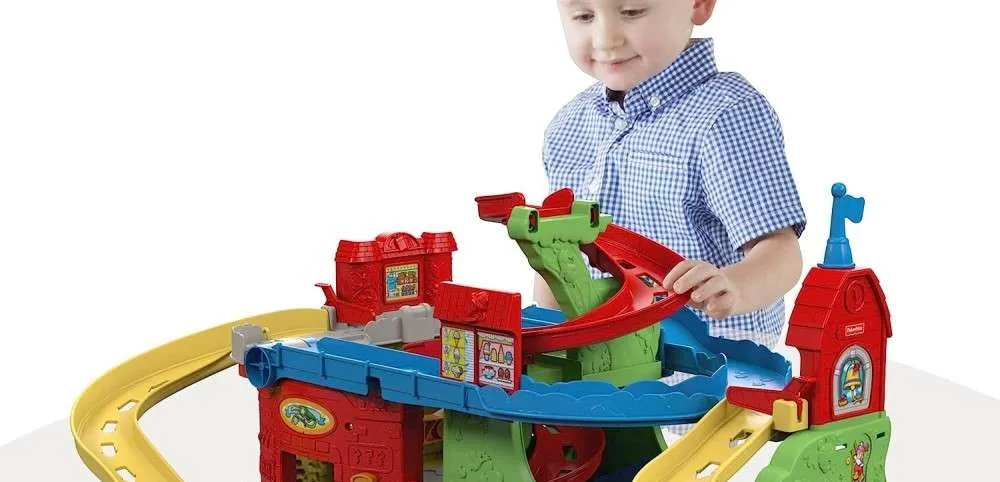
Examples:
- Fisher Price Little People Sit n Stand Skyway
- VTech Pop-a-Balls Push and Pop Bulldozer
- Melissa & Doug Classic ABC Wooden Block Cart
- Step2 Lift and Roll Digger
- Green Toys Tea Set
2 to 3 Years
During the preschool years, children start running and jumping confidently, kicking and throwing balls, speaking in short sentences, understanding rules, engaging in more complex pretend play, and developing longer attention spans.
Recommended Toys: Jigsaw puzzles (5-10 pieces), large pretend play sets, toy kitchens, workbenches, toolkits, riding toys, tricycles, playdough and clay, dress-up clothes, action figures and dolls, picture books, magnetic letters/numbers, wooden trains and cars, foam building blocks.

Examples:
- Step2 Lights & Sounds DJ Rooftop Playhouse
- Fisher Price Little People Sit n Stand Skyway
- Magna-Tiles Clear Colors 100 Piece Set
- Green Toys Tea Set with Tea Pot and Cups
- Melissa & Doug Scratch Art Rainbow Mini Notes
So in summary, look for toys that align with your baby’s emerging abilities at each age. Their developmental needs will change rapidly in the early years, so it’s ideal to have a variety of toys on hand to stimulate their growth across domains.

Key Factors to Consider
Beyond your baby’s age, there are other key factors to keep in mind when selecting developmental toys:
Safety
Since babies put everything in their mouths, be sure toys have no small detachable parts that could be choking hazards. Ensure they’re BPA free, made of non-toxic materials and lead/phthalate free. Avoid toys with sharp edges or loose parts.
Material
Brightly colored plastic toys tend to get all the hype but babies also benefit from wood, fabric and natural materials that stimulate senses. Varied textures add interest too.
Stimulation
Toys should be engaging but not overstimulating with crazy lights/sounds. They should captivate your child’s attention and ignite curiosity.
Age Appropriateness
Always check toy labels for the recommended age range and developmental stage. Don’t buy toys with features far above your child’s current abilities.
Durability
Given how much use (and abuse) toys get, ensure they’re sturdy enough to withstand biting, throwing, and your child’s explorations.
Following these guidelines will lead you to toys that entertain and educate your baby. Next, let’s look at different categories of developmental toys.

Types of Developmental Toys
There are endless toy options on the market but they generally fall into four main categories that promote development:
Sensory Toys
Sensory toys stimulate your baby’s emerging senses of sight, sound, touch and movement. These include:
- Rattles, teethers, grips – Develops grasping, chewing, shaking
- Activity mats, gyms, mobiles – Promotes visual tracking
- Squeaky, crinkly, soft toys – Stimulates hearing and touch
- Mirrors, peek-a-boo toys – Sparks interest in faces and objects
Motor Skills Toys
These toys build your baby’s physical abilities, coordination and movement:
- Stacking cups, rings – Improves hand-eye coordination
- Shape sorters, puzzles – Challenges fine motor skills
- Pull toys, walker toys – Boosts balance while crawling/walking
- Balls, riding cars – Develops gross motor skills
Cognitive Toys
Cognitive or problem solving toys exercise your baby’s developing brainpower:
- Shape sorters, puzzles – Teaches object permanence, spatial awareness
- Blocks, stackers – Encourages imaginative building
- Board books – Boosts listening, language and memory
- Cause and effect toys – Promotes reasoning and critical thinking
Language Development Toys
Toys that spark communication development include:
- Picture books, flashcards – Grows vocabulary and listening
- Toy phones, play sets – Inspires role playing
- Puppets, stuffed animals – Encourages social interaction
- Musical instruments – Allows self-expression through sound
Having a mix of these toy types creates a well-rounded “play diet” for babies. Now let’s look at top products in these categories.
Top Brands and Products
Certain toy brands stand out for their focus on developmental benefits for babies. Here are top products from reputable brands to consider:
Infant Toys (0-1 year)
- Lamaze – High contrast and sensory toys
- Manhattan Toy – Teethers, rattles, soft activity toys
- Fisher Price – Stacking toys, activity centers, musical/light toys
- Sassy – Rattles, teethers, tactile development toys
- Oball – Easy to grasp rattles and balls
- Playskool – Stacking cups, blocks, activity cubes
- VTech – Musical and learning toys
Toddler Toys (1-3 years)
- Melissa & Doug – Wooden puzzles, shape sorters, arts and crafts
- Little People (Fisher Price) – Play sets, figures, vehicles, dollhouses
- Green Toys – Eco-friendly cars, tea sets, toolkits
- Hape – Wooden toys like pianos, kitchens, tool benches
- Magnatiles – Magnetic building tiles
- Play-Doh – Sparks creativity and hands-on fun
- LeapFrog – Educational, interactive toys

Common Mistakes to Avoid
While choosing suitable developmental toys for your baby may feel tricky, try to avoid these common mistakes:
- Selecting toys with features far above your child’s abilities that end up frustrating them. Stick toys tailored to their current stage.
- Overlooking safety labels about choking hazards from small parts for little mouths.
- Assuming all plastic toys are bad quality. Look for BPA/phthalate free markers.
- Buying too many noisy electronic toys that overstimulate your baby. Mix these with simple, open-ended toys.
- Choosing trendy toys not designed with developmental benefits in mind. Vet toys thoughtfully.
- Focusing only on cognitive toys and forgetting gross motor, sensory and language toys. Variety is key.
- Forgetting to offer supervision for interactive play to get the most learning. Sitting with your baby fosters bonding too.
Following the age-based guidance and toy types outlined in this article will help you avoid missteps.
Conclusion
Picking the right developmental toys lays the foundation for your baby’s growth and learning in the early years. While the options may seem endless, focus on choosing playthings tailored to your child’s current developmental abilities and interests. Pay attention to safety, materials, stimulation and durability too.
Aim for a variety of toys across sensory, motor, cognitive and language domains. Consult this guide by age bracket and key toy types to build a well-rounded toy collection. Mix old classics with new innovative toys and stay involved in interactive play. Let your baby take the lead to discover their interests.
With the right developmental toys in rotation as your baby grows, playtime transforms into valuable learning experiences to supplement their natural development. Toys are tools to aid your child in reaching their full potential.
Frequently Asked QuestionsWhat are some examples of developmentally appropriate toys for infants?For newborns, good toy choices are high-contrast toys, soft rattles, lightweight mobiles, and teething rings. For babies 3-6 months, try toys that make noises, blocks, soft books, graspable toys like rings or keys, and activity mats or gyms. For 6-12 months, stacking cups, shape sorters, pop-up toys, balls, and push/pull toys are ideal. What are some cognitive toys for 1-2 year olds?Great cognitive toys to boost thinking skills for 1-2 year olds are simple puzzles with knobs (2-4 pieces), shape sorters, blocks and stackers, pop-up toys, and activity tables or cubes with different buttons, lights, textures, and sounds. These toys promote problem solving, hand-eye coordination, and cause-and-effect understanding. How do toys help with child development?Toys tailored to a child’s stage aid development across domains. Sensory toys develop vision, hearing, touch. Motor toys build physical skills and coordination. Cognitive toys exercise thinking abilities and boost brainpower. Language toys encourage communication, self-expression and social skills. The right toys give learning opportunities. What are some age appropriate toys for preschoolers?Good toy choices for 2-4 year old preschoolers include puzzles with up to 10 pieces, dress-up clothes, toy kitchen sets, toolkits or workbenches, riding toys, large building blocks, magnetic letters/numbers, picture books, play dough, and basic board games like Candy Land. These ignite imagination and more complex pretend play. What should I consider when choosing a developmentally appropriate toy?Consider your child’s current abilities, age recommendations, safety, materials, engagement level, and variety. Select toys that align with what your child can do now to boost emerging skills without frustrating them. Prioritize safety and combine different toy types for a well-rounded collection. |


